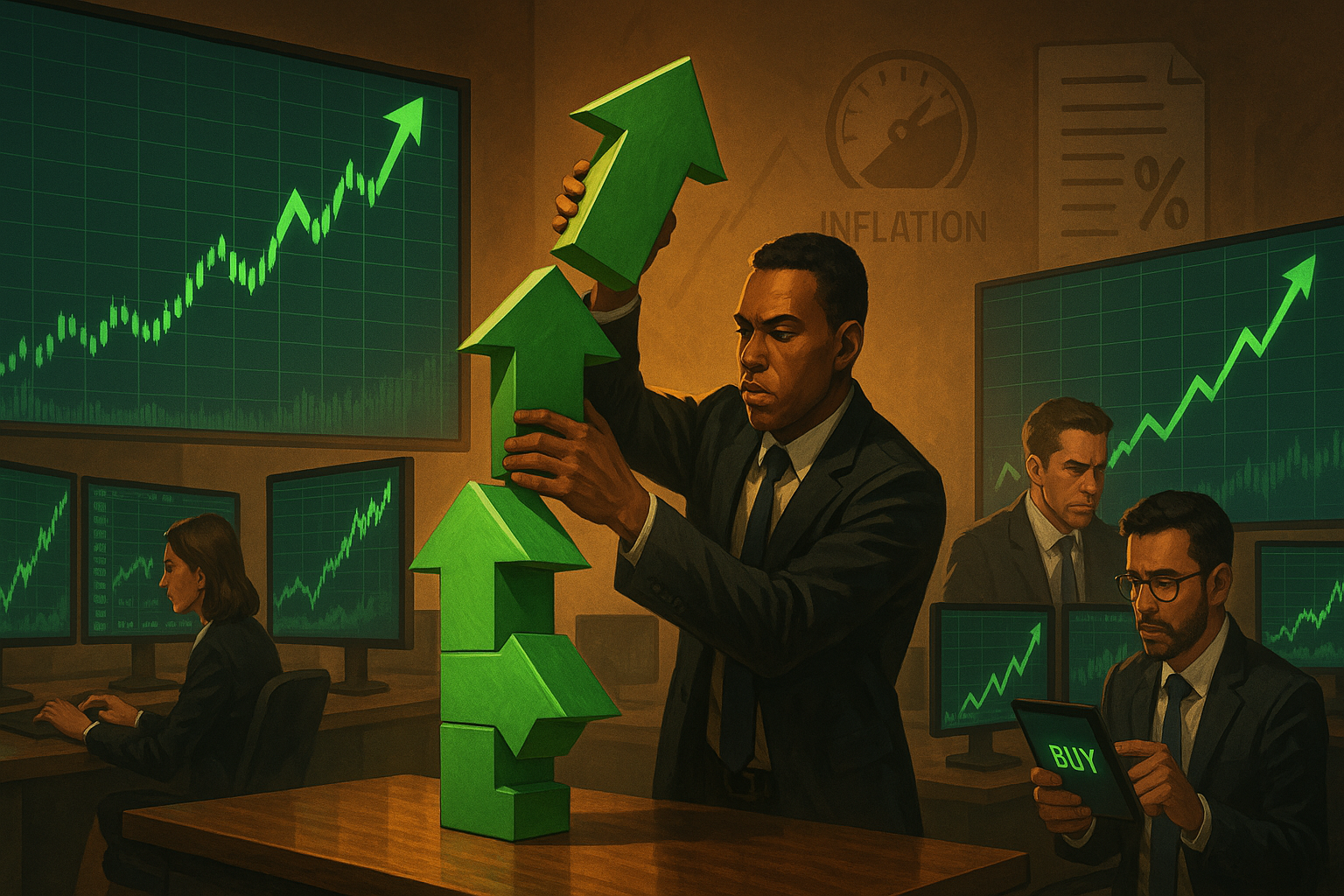Wall Street's big-money players are suddenly snapping up stocks like they're limited-edition Pokémon cards. Bank of America's newest Global Fund Manager Survey shows these professionals have cranked their equity allocations to a seven-month high in September – levels we haven't witnessed since February.
The timing is... peculiar, to put it mildly.
Because let's face it – the economic landscape isn't exactly sunshine and rainbows right now. Inflation continues to stick around like that house guest who doesn't get the hint. The Fed keeps playing chicken with interest rate cuts. And the global political situation? Let's just say "complicated" would be the diplomatic term.
So what in the world is driving this buying frenzy?
I've been covering institutional investor behavior for years, and what we're seeing now fits perfectly into what I call the "FOMI vs. FOLS paradigm" – that's Fear Of Missing In versus Fear Of Looking Stupid. It's the eternal tightrope walk that keeps portfolio managers awake at night.
Right now, FOMI has the upper hand. By a lot.
Think about it. The S&P 500 has surged roughly 20% this year despite numerous reasons it probably shouldn't have. These fund managers who played it safe earlier in 2024? They've been watching from the sidelines, nursing their caution while the market partied without them.
There comes a point – and we've clearly reached it – when the pain of missing gains becomes more unbearable than the fear of potential losses. I've seen this psychological shift dozens of times before. After enough client calls explaining why you're underperforming the benchmark, something snaps.
"The professional pressure to chase performance is immense," one portfolio manager told me last week over coffee (requesting anonymity because, well, admitting this stuff isn't exactly career-enhancing). "Nobody wants to be the genius who avoided a crash that never came."
The irony is thick enough to spread on toast. These same managers were bullish at much lower prices earlier this year. Then they reduced exposure during various market hiccups. Now they're buying back at higher levels.
Buy high, sell low. Rinse, repeat.
But there's another factor at play – the ever-shifting market narrative. We've witnessed an impressive transformation from "recession is coming" to "soft landing achieved" to the current favorite: "rate cuts plus robust growth." It's the investment equivalent of having your cake, eating it, then somehow discovering the cake has reproduced itself.
Look, maybe they're right to pile in. Markets could absolutely continue their upward march, especially if the Fed delivers those rate cuts everyone's been fantasizing about since... well, since they started hiking rates.
The problem? When bullishness reaches these levels, there's not much dry powder left to push stocks higher. When everyone's already on the bull train, who's left to buy tickets?
History hasn't been particularly kind to moments of extreme optimism. That February peak preceded some choppy waters. And if you dig through market archives (as I have, perhaps too obsessively), you'll find that sentiment extremes often function as contrary indicators.
Not immediately – that would be too easy – but eventually.
I'm reminded of something a grizzled hedge fund manager told me back in 2008: "The market takes the elevator down and the stairs up... except when it doesn't." Not exactly Buffett-level wisdom, but there's truth there.
What fascinates me most about this current bullish wave is what it reveals about institutional psychology. Even the most sophisticated financial minds fall prey to narrative-seeking and recency bias. When markets keep climbing despite occasional tantrums, our brains construct stories justifying why this makes perfect sense.
For the professionals, being underinvested during a rally isn't just financially painful – it's career-threatening. Nobody pays those hefty management fees for someone to sit in cash while indices hit record highs.
So here we are. Professional investors piling into stocks at seven-month bullishness highs while the economic foundation increasingly resembles a Jenga tower after several rounds of play.
Will they be vindicated? It's possible. Markets have a nasty habit of making fools of both the perma-bears and the "this time is different" crowd.
But when everybody's crowding onto one side of the investment boat? That might be precisely when you should check if your life jacket fits.
I guess we'll find out soon enough whether this bullish fervor represents brilliant foresight or the final capitulation before reality crashes the party. In the meantime, I'll be watching closely – with one eye firmly fixed on the nearest exit.
